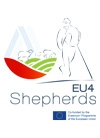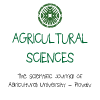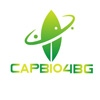Hydrology
|
Course title: |
Hydrology |
|
|
Course code: |
AFHYD |
|
|
ECTS: |
5 |
|
|
In-class hours |
Lectures: |
30 |
|
Laboratory work/Tutorials: |
30 |
|
|
Self-preparation hours |
Practical training: |
- |
|
Other: |
65 |
|
|
Total hours: |
125 |
|
|
Language: |
English |
|
|
Study cycle: |
Bachelor, Master, PhD |
|
|
Semester: |
Winter & Summer |
|
|
Faculty: |
Faculty of Agronomy |
|
|
Name of the lecturer(s): |
Assoc. Prof. Dafinka Ivanova, PhD |
|
|
Mode of delivery: |
Face-to-face, distance learning, a combination of both |
|
|
Prerequisites: |
Basic knowledge of physics, mathematics, geography, or other natural science |
|
|
Learning outcomes of the course unit: |
Hydrology is an earth science dealing with the assessment of the natural distribution of water in time and space and with evaluating the impact of man-made changes on the distribution and quality of this water. One of the essential elements of life on this planet is freshwater. Sustainable development, therefore, demands sustainable management of the world's limited resources of fresh water. Hydrology is the study of the movement, distribution, and quality of water on Earth, including the hydrologic cycle, water resources and environmental watershed sustainability. This course provides the opportunity to enhance knowledge of the nature, occurrence, characterization and management of water; it also provides theoretical and practical quantitative training relevant to the needs of the water and environmental engineering industries. |
|
|
Course contents: |
Theme 1: Hydrology as a science THEORY: Introduction- the importance of water-physical and chemical properties of water-the catchment and river basin- the global and catchment hydrological cycle- the water balance equation. (Hours 2) PRACTICE: Case studies concerning this course (Hours 2)
Theme 2: Precipitation Precipitation as a process (precipitation formation)-Precipitation distribution (static influences on precipitation distribution) –Rainshadow effect-forest rainfall partitioning-Measurements of rainfall, snowfall and forest rainfall – moving from point measurements to spatially distributed estimation (Thiessen polygon, hypsometric method, isohyetal and smooth surface techniques)-rainfall intensity and storm duration-surrogate measures for estimating rainfall (radar, satellite remote sensing) Precipitation in the context of water quality and quantity (Hours 2+2) PRACTICE: Cases studies for 4 hours
Theme 3: Evaporation THEORY: Evaporation as a process (available energy, water supply, the receiving atmosphere, evaporation above a vegetation canopy)-Measurement of evaporation (direct micrometeorological measurements)-Indirect measurements (evaporation pan, lysimeters) –Estimation of evaporation (Thornthwaite, Penman, simplifications to Penman, Penman-Monteith, Reference evaporation) Simple estimation of E from PE and soil moisture- remote sensing of evaporation- mass balance estimation-Evaporation in the context of water quality and quantity. (Hours 2+2+2) PRACTICE: Case studies in all methods (Hours 6)
Theme 4: Storage THEORY: Water beneath the earth’s surface-water in unsaturated zone- soil water content-ability to transmit water-infiltration rate- capillary forces- soil suction- water in the saturated zone- aquifers and aquitards - groundwater flow-measuring and estimating water beneath the surface- snow and ice- measuring and estimating snow depth and cover-snow melt. (Hours 2+2) PRACTICE: Case studies (Hours 4)
Theme 5: Runoff THEORY: Runoff mechanisms- overland flow-subsurface flow-channel flow-base flow-measuring stream flow-Instantaneous and continuous streamflow measurements-measuring hill slope runoff –estimating streamflow- Floods (Hours 2+2) PRACTICE: Case studies (Hours 4)
Theme 6: Stream flow analysis and modeling THEORY: Hydrograph analysis-hydrograph separation-the unit hydrograph-flow duration curves-frequency analysis- low flow and limitations of frequency analysis-computer modeling in hydrology-flow assessment for stream ecology (Hours 2+2) PRACTICE: Case studies (Hours 4)
Theme 7: Water quality THEORY: The interlink between water quantity and quality-the interlink between hydrological processes and water quality- employment for hydrologists- water quality parameters- physical and chemical parameters- water quality measurements-sampling gravimetric and volumetric methods-colorimetry-special techniques-proxy measures of water quality-eutrofication- controlling water quality. (Hours 2+2) PRACTICE: Case studies (Hours 4)
Theme 8: Water resource management in a change word THEORY: Water resource management –integrated water resource and catchment management – Hydrology and change- climate change-change in land use- groundwater depilation- Urbanization (Hours 2) PRACTICE: Case studies (Hours 2) |
|
|
Recommended or required reading: |
1. Beven, K. (1989) Changing ideas in hydrology – the case of physically-based models. Journal of Hydrology, 157–172. 2. Beven, K. (2004) Robert E. Horton’s perceptual model of infiltration processes. Hydrological Processes, 3447–3460. 3. Biggs, B.J.F. (1989) Biomonitoring of organic pollution using periphyton, South Branch, Canterbury, New Zealand. New Zealand Journal of Marine and Freshwater Research 263–274. 4. Chapman, D. (ed.) (1996) Water quality assessments: 5. a guide to the use of biota, sediments and water in environmental monitoring (2nd edition). 6. Cherkauer, D.S. (1975) Urbanization’s impact on water quality during a flood in small watersheds, Water Resources Bulletin 87–998. 7. Chiew, F.H.S., Whetton, P.H., McMahon, T.A. and Pittock, A.B. (1995) Simulation of the impacts of climate change on runoff and soil moisture in Australian catchments. Journal of Hydrology121-147 8. Cluckie, I.D. and Collier, C.G. (eds) (1991), Hydrological applications of weather radar. Ellis Harwood, Chichester. 9. Dodds, W.K. (2002) Freshwater ecology: concepts and environmental applications. Academic Press, San Diego 10. Dunne, T. (1978) Field studies of hillslope flow processes. In: M.J. Kirkby (ed.) Hillslope hydrology., J. Wiley & Sons, Chichester. 11. Gardner, W.H. (1986) Water content. In: A.Klute (ed.) Methods of soil analysis. Part 1. Physical and mineralogical methods. American Society of Agronomy–Soil Science Society of America, Madison, Wisc., pp. 493–544 12. Jones, J.A.A. (1997) Global hydrology: processes, resources and environmental management. Longman, Harlow. 13. Stumm, W. (1986) Water and integrated ecosystem. Ambio 201–207. |
|
|
Planned learning activities and teaching methods: |
Lectures, presentation, briefing, tutorials Dialogue methods: conversation, discussion, brainstorming. |
|
|
Assessment methods and criteria: |
Exercises evaluation and final written exam. |
|
 - Events on the occasion of the 80th anniversary of AU
- Events on the occasion of the 80th anniversary of AU











